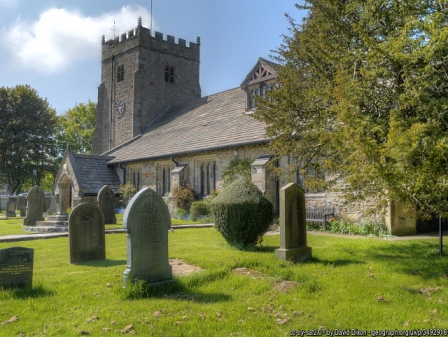 |
The
Parish of Chipping |
 |

Chipping lies in the heart of the Ribble valley on the edge of the Trough of Bowland, which is classed as “an area of outstanding natural beauty”. The village is over 1,000 years old and is in the Domesday book as Chippenden, the name derives from the medieval ‘Chepyn’ meaning market place. The village thrived during the Industrial Revolution with seven mills sited along Chipping Brook. Only one of the seven remain, this belongs to the chair making factory of H. J. Berry who have operated in the village since 1890. When the Knights Templar Church in Stydd, near Ribchester, underwent a major restoration, H. J. Berry designed and made the chairs for the congregation.
John Brabin, a wealthy London cloth merchant and dyer lived in the village in the 1600's. Following his death in 1683, he left instructions to create a trust providing relief to the poor and education for the young and in 1684 a free school was founded by his trustees. Three almshouses were also founded by the same trust, for twelve poor women, who received twelve shillings each monthly. His gifts were intended to be for the benefit of the whole village regardless of religious denomination, and the money from the trust fund is still used to benefit the education of all village children.
Thornley cum Wheatley is one of the two townships in the Parish of Chipping, the other being Chipping itself. The two are separated by the River Loud, which flows into the Hodder at Doeford Bridge. The Roman road, Watling Street after leaving Ribchester to the north, crosses Longridge Fell and goes through Thornley cum Wheatley.
Thornley Hall was originally built in 1605. The manor of Thornley cum Wheatley has been documented since Henry VII’s reign and has been owned by the Earl of Derby.
| Chipping Home & Contents | ©Lancashire OnLine Parish Clerks | Lancashire Home |